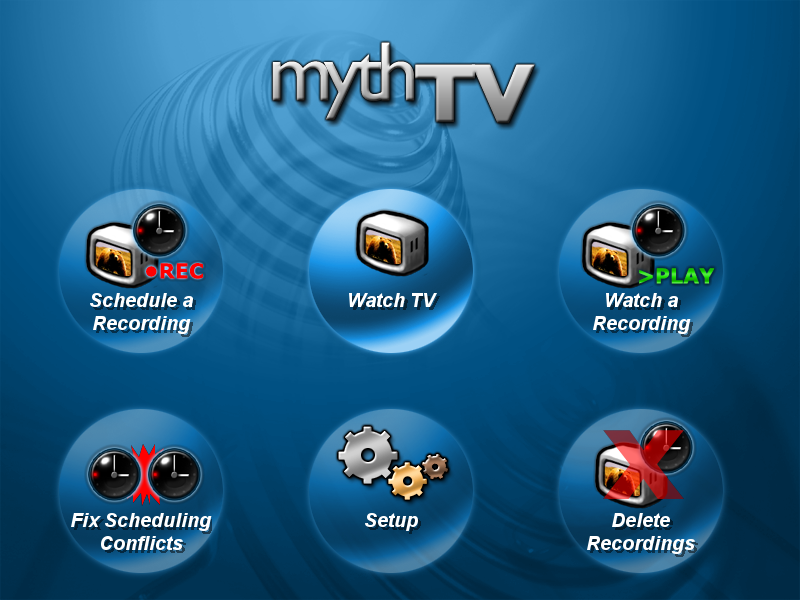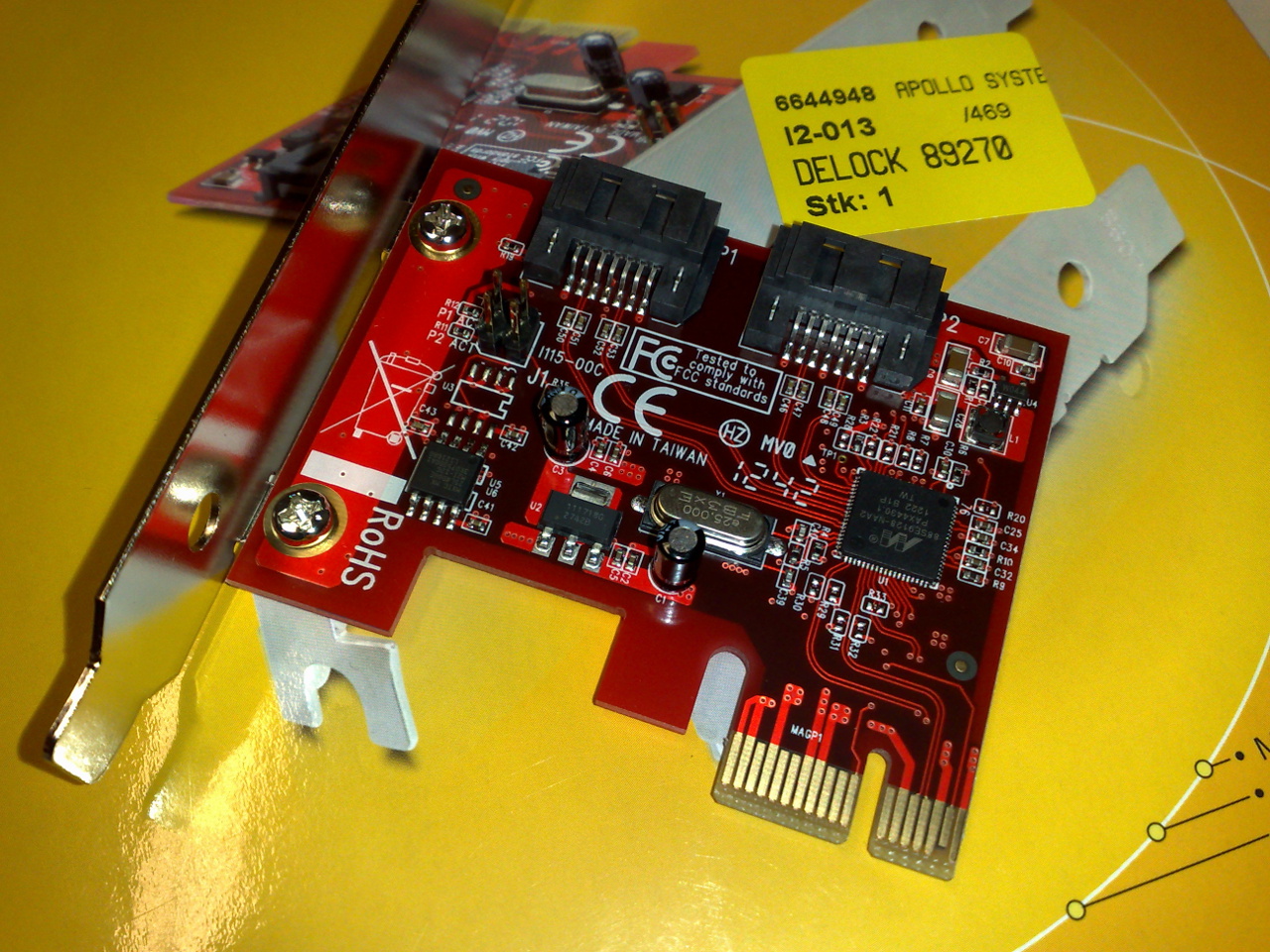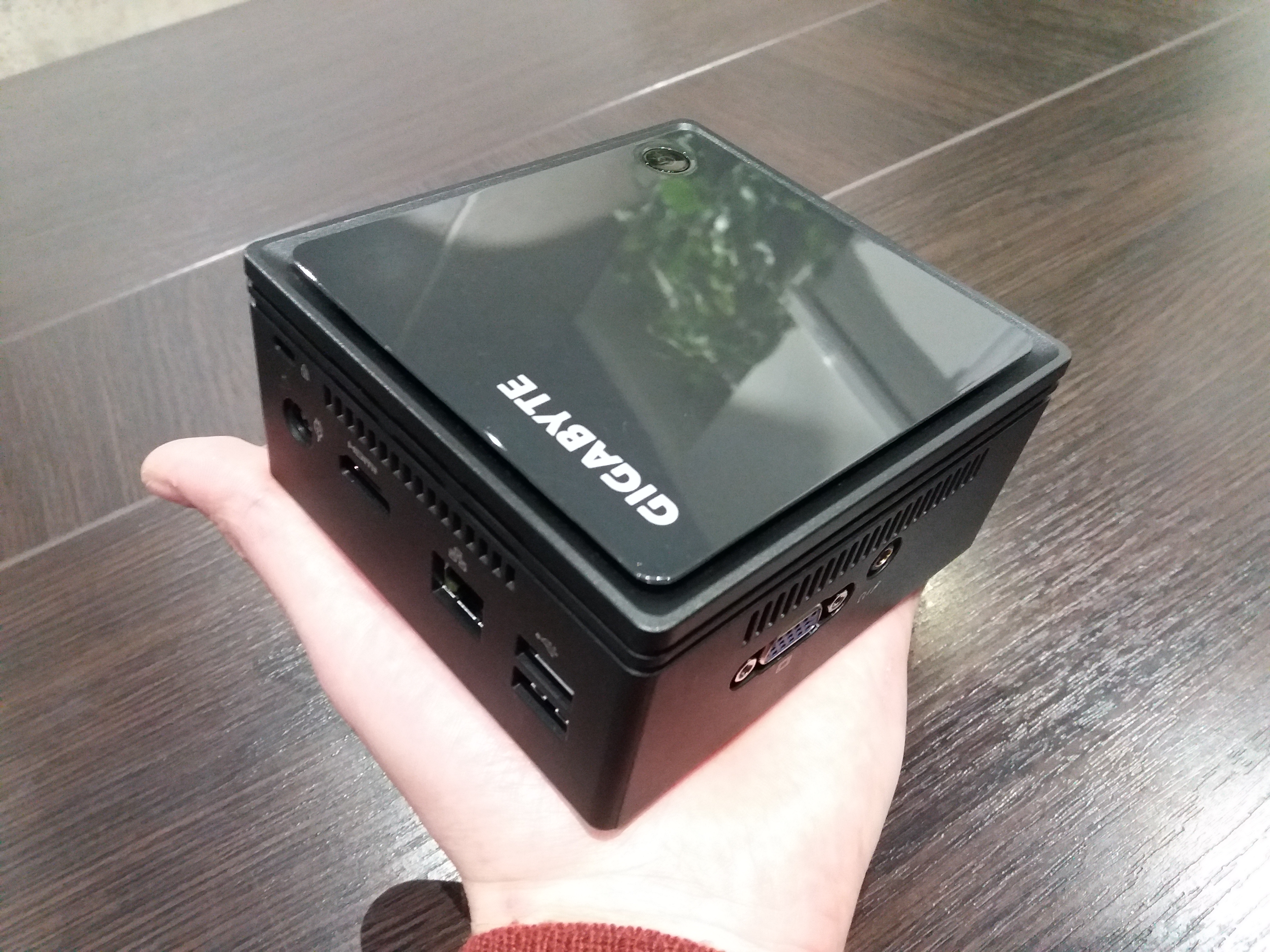|
Fit-PC3
The fit-PC3 is a small, light, fan-less nettop computer manufactured by the Israeli company CompuLab. Several fit-PC3 variations are available - fit-PC3 was introduced early 2012. The device is power-efficient (about 6 - 18 W) and therefore considered to be a green computing project, capable of using open source software and creating minimal electronic waste. fit-PC3 The fit-PC3 has been released early 2012, CompuLab fit-PC3 includes: * APU, (6.4W to 18W): ::* AMD G-T44R single core processor @ 1.2Ghz with AMD Radeon HD 6250 Graphics ::* AMD G-T40E dual core processor @ 1Ghz with AMD Radeon HD 6250 Graphics ::* AMD G-T56N dual core processor @ 1.65Ghz with AMD Radeon HD 6320 Graphics * Main I/O: AMD Embedded A55E Controller Hub * Memory: Up to 8GB DDR3-1333 (2 SO-DIMM sockets) * Display: Dual-head HDMI 1.4 + DisplayPort (G-T40E model has HDMI 1.3a) * Audio: Digital 7.1 channels S/PDIF, stereo line-out, line-in, mic * Storage: Internal 2.5" SATA III hard disk, mSATA s ... [...More Info...] [...Related Items...] OR: [Wikipedia] [Google] [Baidu] |
Bluetooth
Bluetooth is a short-range wireless technology standard that is used for exchanging data between fixed and mobile devices over short distances and building personal area networks (PANs). In the most widely used mode, transmission power is limited to 2.5 milliwatts, giving it a very short range of up to . It employs UHF radio waves in the ISM bands, from 2.402GHz to 2.48GHz. It is mainly used as an alternative to wire connections, to exchange files between nearby portable devices and connect cell phones and music players with wireless headphones. Bluetooth is managed by the Bluetooth Special Interest Group (SIG), which has more than 35,000 member companies in the areas of telecommunication, computing, networking, and consumer electronics. The IEEE standardized Bluetooth as IEEE 802.15.1, but no longer maintains the standard. The Bluetooth SIG oversees development of the specification, manages the qualification program, and protects the trademarks. A manufacturer must meet ... [...More Info...] [...Related Items...] OR: [Wikipedia] [Google] [Baidu] |
Nettop
A nettop (or miniature PC, Mini PC or Smart Micro PC) is a small-sized, inexpensive, low-power, legacy-free desktop computer designed for basic tasks such as web browsing, accessing web-based applications, document processing, and audio/video playback. The word ''nettop'' is a portmanteau of ''network'' and ''desktop''. It is the desktop counterpart of the netbook. Modern ( 2020) mini PCs or small form factor PCs can be much more powerful, being equipped with high-end laptop components or mid-range desktop components. Compared with ordinary desktop computers, nettops are not only smaller and less expensive, but they also consume much less power. For example, CompuLab's fit-PC2 consumes no more than 8 watts of power whereas a typical desktop would easily consume more than 100 watts of power; consequently, nettops require significantly less cooling and may even be completely fanless. Some do not have an optical disk drive and use a solid state drive, making them completely sil ... [...More Info...] [...Related Items...] OR: [Wikipedia] [Google] [Baidu] |
Media Center (other)
Media center or media centre may refer to: Audio-visual software and devices * Entertainment center, a furniture housing electronics for media consumption * Home cinema, also commonly referred to as a dedicated "home theater" or "home media room" * Home theater PC, media computer designed for living-room or Home cinema use ** JRiver Media Center, a multimedia application for Windows computers ** Kodi (software), Kodi, open source media center, cross-platform software formerly named XBMC and originally named Xbox Media Center ** MediaPortal Media Center, a free alternative to Windows Media Center ** Portable Media Center ** Sally Project, open source software, designed for touchscreen Windows machines ** Western Digital Media Center ** Windows Media Center, Microsoft PC software application for home theater Journalism * International Broadcast Centre at a major sports event such as the Olympic Games * Independent Media Center or Indymedia * RSV Media Center * Women's Media Center ... [...More Info...] [...Related Items...] OR: [Wikipedia] [Google] [Baidu] |
Media PC
A home theater PC (HTPC) or media center computer is a technological convergence, convergent device that combines some or all the capabilities of a personal computer with a software application that focuses on video, photo, audio playback, and sometimes digital video recorder, video recording functionality. Since the mid-2000s, other types of consumer electronics, including Video game console, game consoles and dedicated media devices, have crossed over to manage video and music content. The term "media center" also refers to specialized application software designed to run on standard personal computers. HTPC and other convergent devices integrate components of a Home cinema, home theater into a unit co-located with a home entertainment system. An HTPC system typically has a remote control and the software interface normally has a 10-foot user interface, 10-foot (3 m) user interface design so that it can be comfortably viewed at typical television viewing distances. An HT ... [...More Info...] [...Related Items...] OR: [Wikipedia] [Google] [Baidu] |
Fit-PC
The fit-PC is a small, light, fan-less nettop computer manufactured by the Israeli company CompuLab. Many fit-PC models are available. fit-PC 1.0 was introduced in July 2007, fit-PC Slim was introduced in September 2008, fit-PC 2 was introduced in May 2009, fit-PC 3 was introduced in early 2012, and fit-PC 4 was introduced spring 2014. The device is power-efficient (fit-PC 1 was about 5 W) and therefore considered to be a green computing project, capable of using open source software and creating minimal electronic waste. Current models fit-PC2 On February 19, 2009, Compulab announced the fit-PC2, which is "a major upgrade to the fit-PC product line". Detailed specifications for the fit-PC2 include an Intel Atom Z5xx '' Silverthorne'' processor (1.1/1.6/2.0 GHz options), up to 2GB of RAM, 160GB SATA Hard Drive, GigaBit LAN and more. The fit-PC2 is also capable of HD video playback. Its declared power consumption is only 6W, and according to the manufacturer, it saves 96% ... [...More Info...] [...Related Items...] OR: [Wikipedia] [Google] [Baidu] |
Wi-Fi
Wi-Fi () is a family of wireless network protocols, based on the IEEE 802.11 family of standards, which are commonly used for local area networking of devices and Internet access, allowing nearby digital devices to exchange data by radio waves. These are the most widely used computer networks in the world, used globally in home and small office networks to link desktop and laptop computers, tablet computers, smartphones, smart TVs, printers, and smart speakers together and to a wireless router to connect them to the Internet, and in wireless access points in public places like coffee shops, hotels, libraries and airports to provide visitors with Internet access for their mobile devices. ''Wi-Fi'' is a trademark of the non-profit Wi-Fi Alliance, which restricts the use of the term ''Wi-Fi Certified'' to products that successfully complete interoperability certification testing. the Wi-Fi Alliance consisted of more than 800 companies from around the world. over 3.05 billion ... [...More Info...] [...Related Items...] OR: [Wikipedia] [Google] [Baidu] |
MSATA
SATA (Serial AT Attachment) is a computer bus interface that connects host bus adapters to mass storage devices such as hard disk drives, optical drives, and solid-state drives. Serial ATA succeeded the earlier Parallel ATA (PATA) standard to become the predominant interface for storage devices. Serial ATA industry compatibility specifications originate from the Serial ATA International Organization (SATA-IO) which are then promulgated by the INCITS Technical Committee T13, AT Attachment (INCITS T13). History SATA was announced in 2000 in order to provide several advantages over the earlier PATA interface such as reduced cable size and cost (seven conductors instead of 40 or 80), native hot swapping, faster data transfer through higher signaling rates, and more efficient transfer through an (optional) I/O queuing protocol. Revision 1.0 of the specification was released in January 2003. Serial ATA industry compatibility specifications originate from the Serial ATA Internat ... [...More Info...] [...Related Items...] OR: [Wikipedia] [Google] [Baidu] |
ESATA
SATA (Serial AT Attachment) is a computer bus interface that connects host bus adapters to mass storage devices such as hard disk drives, optical drives, and solid-state drives. Serial ATA succeeded the earlier Parallel ATA (PATA) standard to become the predominant interface for storage devices. Serial ATA industry compatibility specifications originate from the Serial ATA International Organization (SATA-IO) which are then promulgated by the INCITS Technical Committee T13, AT Attachment (INCITS T13). History SATA was announced in 2000 in order to provide several advantages over the earlier PATA interface such as reduced cable size and cost (seven conductors instead of 40 or 80), native hot swapping, faster data transfer through higher signaling rates, and more efficient transfer through an (optional) I/O queuing protocol. Revision 1.0 of the specification was released in January 2003. Serial ATA industry compatibility specifications originate from the Serial ATA Internatio ... [...More Info...] [...Related Items...] OR: [Wikipedia] [Google] [Baidu] |
Nettop
A nettop (or miniature PC, Mini PC or Smart Micro PC) is a small-sized, inexpensive, low-power, legacy-free desktop computer designed for basic tasks such as web browsing, accessing web-based applications, document processing, and audio/video playback. The word ''nettop'' is a portmanteau of ''network'' and ''desktop''. It is the desktop counterpart of the netbook. Modern ( 2020) mini PCs or small form factor PCs can be much more powerful, being equipped with high-end laptop components or mid-range desktop components. Compared with ordinary desktop computers, nettops are not only smaller and less expensive, but they also consume much less power. For example, CompuLab's fit-PC2 consumes no more than 8 watts of power whereas a typical desktop would easily consume more than 100 watts of power; consequently, nettops require significantly less cooling and may even be completely fanless. Some do not have an optical disk drive and use a solid state drive, making them completely sil ... [...More Info...] [...Related Items...] OR: [Wikipedia] [Google] [Baidu] |
DisplayPort
DisplayPort (DP) is a digital display interface developed by a consortium of PC and chip manufacturers and standardized by the Video Electronics Standards Association (VESA). It is primarily used to connect a video source to a display device such as a computer monitor A computer monitor is an output device that displays information in pictorial or textual form. A discrete monitor comprises a visual display, support electronics, power supply, housing, electrical connectors, and external user controls. The di .... It can also carry audio signal, audio, USB, and other forms of data. DisplayPort was designed to replace VGA connector, VGA, FPD-Link, and Digital Visual Interface (DVI). It is backward compatibility, backward compatible with other interfaces, such as HDMI and DVI, through the use of either active or passive adapters. It is the first display interface to rely on packetized data transmission, a form of digital communication found in technologies such as Ethernet, U ... [...More Info...] [...Related Items...] OR: [Wikipedia] [Google] [Baidu] |
Comparison Of AMD Chipsets
This is an overview of chipsets sold under the AMD brand, manufactured before May 2004 by the company itself, before the adoption of open platform approach as well as chipsets manufactured by ATI Technologies after October 2006 as the completion of the ATI acquisition. North- and Southbridges Northbridges AMD-xxx A-Link Express II A-Link Express and A-Link Express II are essentially PCIe 1.1 x4 lanes. See Comparison of ATI Chipsets for the comparison of chipsets sold under the ATI brand for AMD processors, before AMD's acquisition of ATI. A-Link Express III A-Link Express III is essentially PCIe 2.0 x4 lanes. Southbridges AMD-xxx 1 Parallel ATA, also known as Enhanced IDE supports up to 2 devices per channel. A-Link Express * All models support eSATA implementations of available SATA channels. 1 Parallel ATA, also known as Enhanced IDE supports up to 2 devices per channel. Fusion controller hubs (FCH) For AMD APU models from 2011 until 2016. ... [...More Info...] [...Related Items...] OR: [Wikipedia] [Google] [Baidu] |






